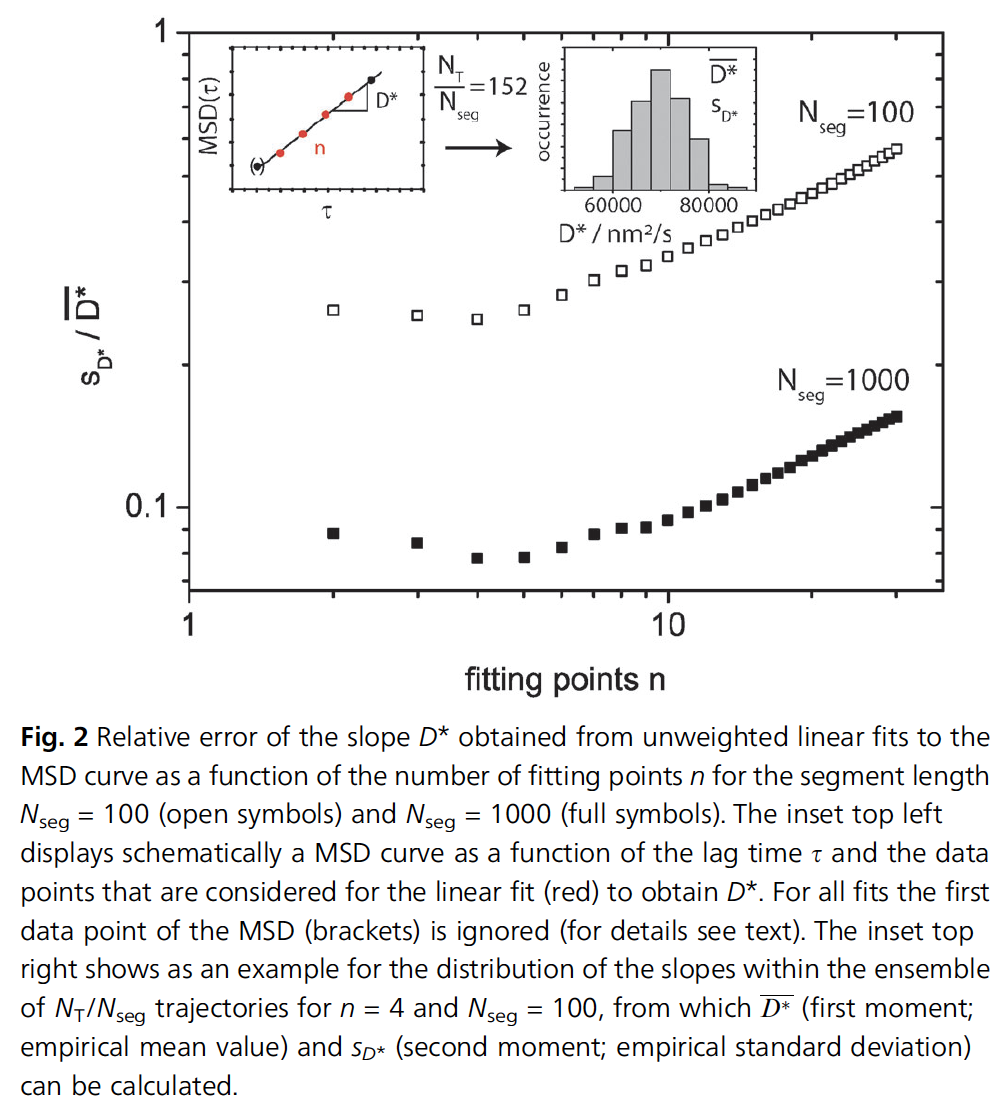Determining the best number of fitting points for MSD data
- source: [ @ernst2013 Measuring a diffusion coefficient by single-particle tracking: statistical analysis of experimental mean squared displacement curves ]
- tags: #errors-nanoparticle-tracking-analysis
To measure the diffusion coefficient, we can fit the mean squared displacement curve with the following equation:
Experimentally, the accuracy of the MSD is limited, as well as the maximum
Considering more points does not necessarily improve the quality of the fit: the first few
In a setting where a single-particle is tracked over

The figure above shows that using tracks of either
Backlinks
These are the other notes that link to this one.
